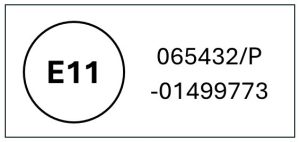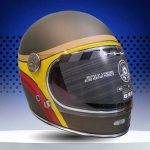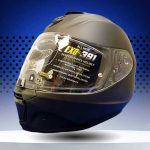ECE R22-06: what you need to know about the new helmet standard
From January 2024, helmet manufacturers can only get approval for new designs which comply with UN ECE R22-06. (Note “ECE” does not mean this is a European only standard, it is a global standard set by the UN). This is the standard which is the legal requirement for motorcycle helmets in the UK.
There is lots of information available about the detailed differences between the old and new standards. The new tests that helmets have to pass are more akin to real-world accidents and take into account the different types of injuries sustained in both high-speed crashes and low-speed tumbles. All you really need to know is that the standard and testing process for ECE R22-06 helmets is higher than for ECE R22-05 helmets, and consequently a helmet marked ECE R22-06 offers better protection to riders.
It has taken 23 years to bring in the new standard. The new tests which are part of ECE R22-06 are very similar to the tests we have always done at SHARP. The SHARP test protocols are however, more stringent, so you can be sure that the SHARP star rating continues to indicate a relative level of protection above and beyond the requirements of the new R22-06 standard. The change in standard has obliged all the helmet manufacturers to make improvements to their designs. Which is great news for riders and means that budget helmets represent even greater value for money in terms of safety. At SHARP we have proven through our testing process that the price of a helmet is not proportionate to the level of protection it provides. You cannot see the safety features of a helmet. All helmets are designed to be safe, but some are designed to offer greater protection. The SHARP tests reveal which helmets go beyond the minimum.
All ECE R220-05 helmets worn in the UK remain compliant and they offer excellent protection, so you do not need to rush out and replace your helmet immediately. ECE R22-05 helmets will still be available in shops, but do watch out for the date of manufacture, as every year a helmet sits on a shelf in a shop matters. The consensus in the industry is to recommend replacing a helmet after 5 years, regardless of whether it has been used or not , so if a ECE R22-05 helmet was made in 2020 and is being offered at a bargain price, just remember that it is now 4 years old. You can generally check the date of manufacture by removing the lining of a helmet to reveal a sticker.
Why does a helmet have a “life”?
Helmets are made of many different types of plastic, and plastic will degrade with time or when exposed to extremes of heat or cold. So just like a pair of boots left in a cupboard… eventually they fall apart even if you have never worn them.
How to tell if a helmet meets the new standard
On the outside, on the back neck area of a helmet, it should say ECE R22-06. Inside the helmet there should be a fabric label with lots of numbers of it.

The large E in a circle with a number tells you where approval was granted i.e. E11 was tested in the UK. E3 would be Italy etc. The long sequence of numbers and letters are:
- Type approval standard. “06” is for ECE R22-06
- Helmet approval number (4 digits)
- The type of helmet: “J” for jet or open face helmets, “P” for full face helmets or ones with protective chin bar, “PJ” is for system (modular or flip-front) helmets
- Followed by a hyphen then the production serial number.
When selecting a new helmet, the UN ECE standard is not the only thing to consider. For maximum protection, you must find a helmet that fits you properly. It has to be comfortable, so you are not trying to adjust it while on the move. If you then have a choice of helmets – one marked 05 and the other marked 06 – SHARP recommends picking one that is ECE R22-06 so that you benefit from the higher safety standards and longer life before it needs replacing.








